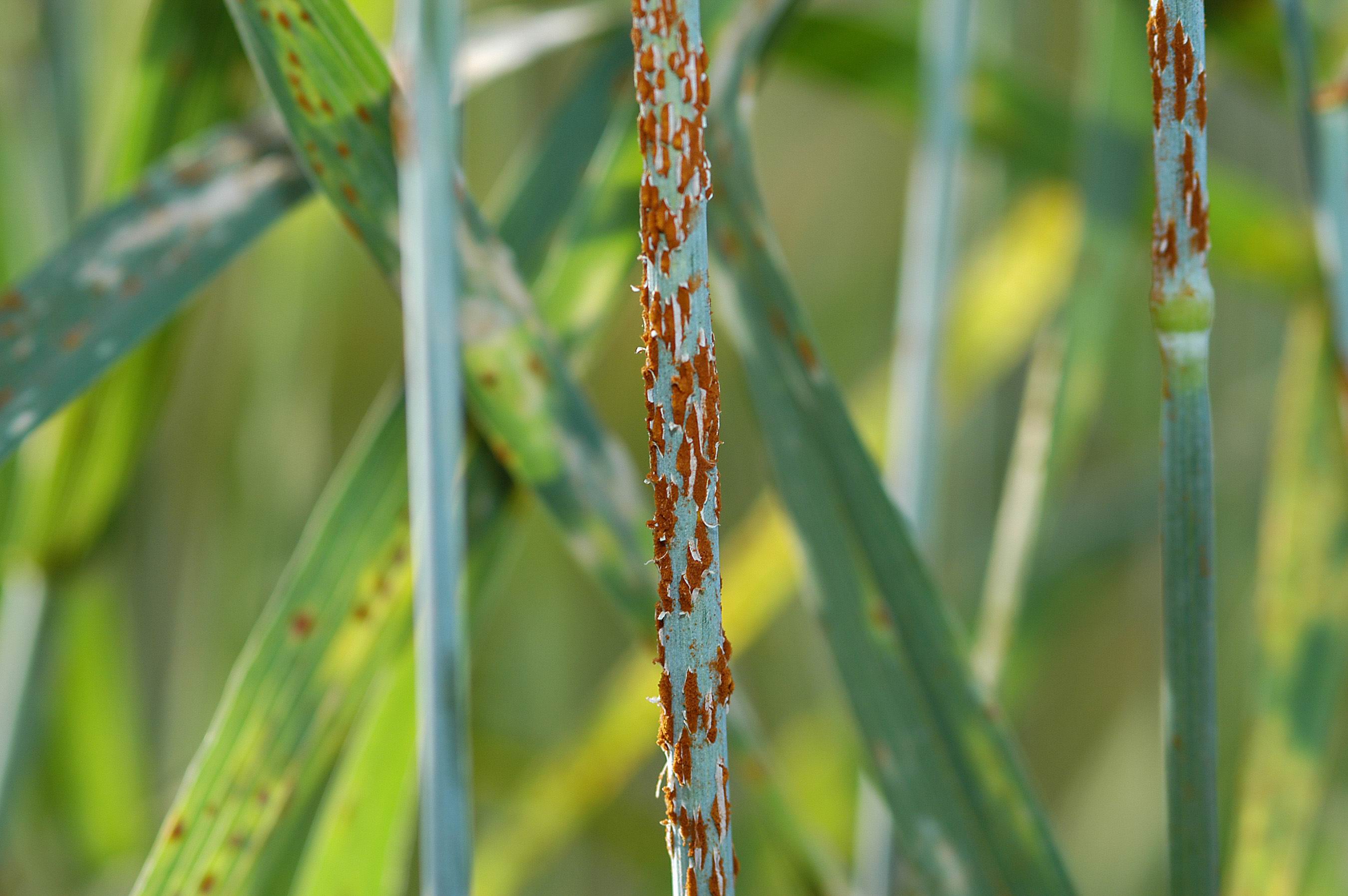
Stem or Black Rust of Wheat
Description:
- Major disease of wheat (quantitative and qualitative losses) that occurs worldwide. Most common where dews are frequent during & after heading (flowering).
- Appears in March
History and Importance:
Wheat stem rust was a serious problem in ancient Greece and Rome. The ancient Romans sacrificed red animals such as dogs, foxes, and cows to the rust god, Robigo or Robigus, each spring during the festival called the Robigalia in hopes that the wheat crop would be spared from the ravages of the rust. This festival was incorporated into the early Christian calendar as St. Mark's Day or Rogation on April 25.
Potential threat to world food supply as it causes 50-70% yield losses. More than $2 billion are lost due to stem rust worldwide.
Etiology:
Causal organism: Puccinia graminis f.sp. tritici
Order: Uredinales
Family: Puccinaceae
Symptoms:
- Dark brown pustules appeared on stalk, leaf sheath & some times on leaves
- Brown powdery mass of uredospores is exposed for dispersal
- Later telia*(sac like structure which contains teliospores) develop & pustules changed from to black
- In severe attack plants look sickly & fail to emerge normal ears
- Grains shriveled & lighter in weight
Disease cycle: (Stem rust is a macrocylic fungus*(produces five type of spores. i.e. Aeciospores, Uredospores, Teliospores, Basidiospores, Pycniospores)
- Aeciospores from alternate host (Barberry, Mahonia) are primary source of inoculum
- Mycelium & uredinia on volunteer plants are also the source of infection
- Uredia are wind blown
- Aeciospores from alternate host land on wheat
- On wheat aeciospores germinate & produce urediospores
- In the season disease spread through uredia to uredia cycle
- As crop near to mature telia developed which later produce basidiospores
- Basidiospores produced on wheat but attack on barberry (alternate host)
- Basidiospores germinate to produce spermatia & receptive hyphae (pycnospores)
- Pycnospores fuses to produce aeciospores
Epidemiology:
- Free water on plants & temp 18-29.5°C
Management:
- Removal of alternate hosts and weeds.
- Early sowing (Crop will mature early and may escape the incidence of stem rust).
- Fungicides: Azoxystrobin at 200 g/liter + cyproconazole at 80 g/liter, tebuconazole + tridimenol.
- Sow resistant varieties i.e. Anaj 2017 and Akbar 2019.


